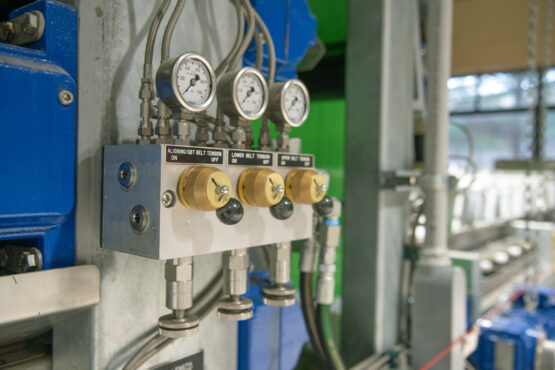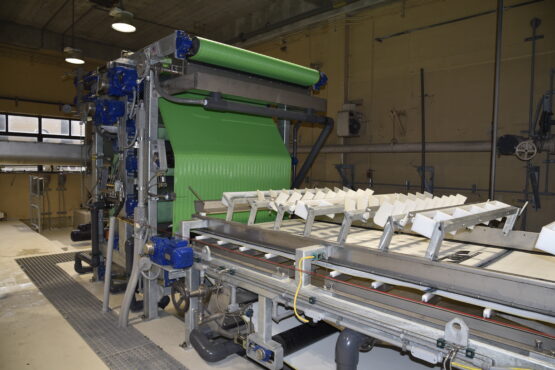Sludge Dewatering
The existing dewatering equipment at the Wallkill Wastewater Treatment Plant was 26 years old and in need of replacement. The equipment is operated seven days per week for six hours per day. Current operators were unable to produce a sludge cake with greater than 13% solids, resulting in very high disposal costs.
An evaluation was performed to determine the most effective means of dewatering. Adjustments to mixed liquor suspended solids (MLSS) and volatile solids of sludge were made and sludge was processed by multiple vendors utilizing centrifuge, screw press, and belt press equipment. Based on the study, KC recommended installation of the new belt press. KC replaced the existing two-step dewatering system with a one-step dewatering system. The existing system pumped the sludge from a holding tank with polymer added and sent it to the gravity belt thickener; then it was pumped to a second holding tank. From the second holding tank, the sludge was pumped with polymer added to the belt press. The sludge was finally deposited into the dump trailer below.
The new system pumps sludge from either holding tank with polymer added to the combination gravity / belt press unit to a conveyor system to be deposited in the dump trailer. The existing polymer system, which consists of four 1,000-gallon mixing tanks with polymer, was replaced with two small polymer mixing systems, reducing time to start up the dewatering process. The existing polymer pumps were no longer needed and only two instead of four sludge pumps are required. The new system is capable of dewatering the same amount of sludge in half the time, with more consistent output and capability to produce a sludge cake with up to 18% solids, reducing disposal costs at current rates by up to $100K annually.
The existing dewatering equipment at the Wallkill Wastewater Treatment Plant was 26 years old and in need of replacement. The equipment is operated seven days per week for six hours per day. Current operators were unable to produce a sludge cake with greater than 13% solids, resulting in very high disposal costs.
An evaluation was performed to determine the most effective means of dewatering. Adjustments to mixed liquor suspended solids (MLSS) and volatile solids of sludge were made and sludge was processed by multiple vendors utilizing centrifuge, screw press, and belt press equipment. Based on the study, KC recommended installation of the new belt press. KC replaced the existing two-step dewatering system with a one-step dewatering system. The existing system pumped the sludge from a holding tank with polymer added and sent it to the gravity belt thickener; then it was pumped to a second holding tank. From the second holding tank, the sludge was pumped with polymer added to the belt press. The sludge was finally deposited into the dump trailer below.
The new system pumps sludge from either holding tank with polymer added to the combination gravity / belt press unit to a conveyor system to be deposited in the dump trailer. The existing polymer system, which consists of four 1,000-gallon mixing tanks with polymer, was replaced with two small polymer mixing systems, reducing time to start up the dewatering process. The existing polymer pumps were no longer needed and only two instead of four sludge pumps are required. The new system is capable of dewatering the same amount of sludge in half the time, with more consistent output and capability to produce a sludge cake with up to 18% solids, reducing disposal costs at current rates by up to $100K annually.


